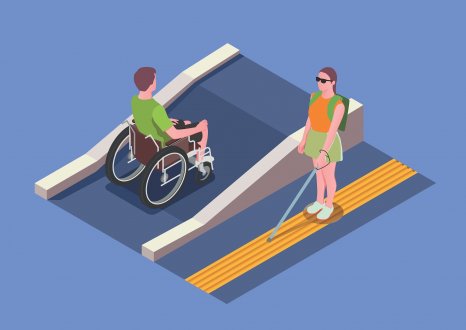Installing Wall Protection can help with compliance to Building Bulletin 102 - ‘Designing for disabled children and children with special educational needs’
Almost a fifth of children in Britain are identified as having special educational needs (SEN). It is estimated that 7 percent of children are disabled and a significant number of children have both SEN and a disability. Most children with SEN and disabilities are educated in mainstream schools - only 1 percent of the total school population is educated in special schools.¹
Building Bulletin 102 states: ‘Children and young people need attractive, accessible school buildings, ‘inclusive design can enable and empower those with SEN and disabilities to participate fully in life at school and in the wider community’.
Hygiene and infection control is another important consideration, especially for children with lowered immunity.²
Here are some ways wall protection can help:
• Installing handrails, particularly on long corridors, offers pupil guidance and support, as well as offering a level of surface protection
• Consider accidental damage that is likely to occur, including the wear and tear caused by wheelchairs and other mobility equipment. It is advised that the choice of materials provides a robust finish to limit damage
• Installing wall guards can help to protect vulnerable corners and can also be used to highlight hazards, critical for pupils who have limited sight
• SureProtect Pure is a smooth and easy to clean and wall protection that creates an impermeable barrier to moisture and bacteria, it is also an excellent alternative to ceramic tiles removing the need for grout which can harbour bacteria
• SureProtect Design (a bespoke design protective sheet) can be used to create supportive visuals, statements, guidance and mantras, all around the school building, while also providing a barrier to wear and tear
BB102 also stresses the need for visual contrast between surfaces and features to help wayfinding and orientation. For example, between ceiling, wall, and floor surfaces, between walls and doors.
• The wide range of colours availability in our Wall Protection range allows walls to contrast with all critical surfaces. All of our Wall Protection is measured to provide Light Reflective Values (LRV) to provide the specifier with the information to ensure a suitable contrast is achieved.
Wayfinding and signage help children with a range of SEN and disabilities³. Colour, texture, acoustics, lighting and sound, as well as landmark features such as seating or plants, can all help children orientate themselves on their journey around the school.
• A way of achieving this is to define routes and areas by selecting different colours or tones for each zone of the school, which will aide navigation and enable easy recognition.
1 Source Building Bulletin 102
2 Source Building Bulletin 102
3 Source Building Bulletin 102



